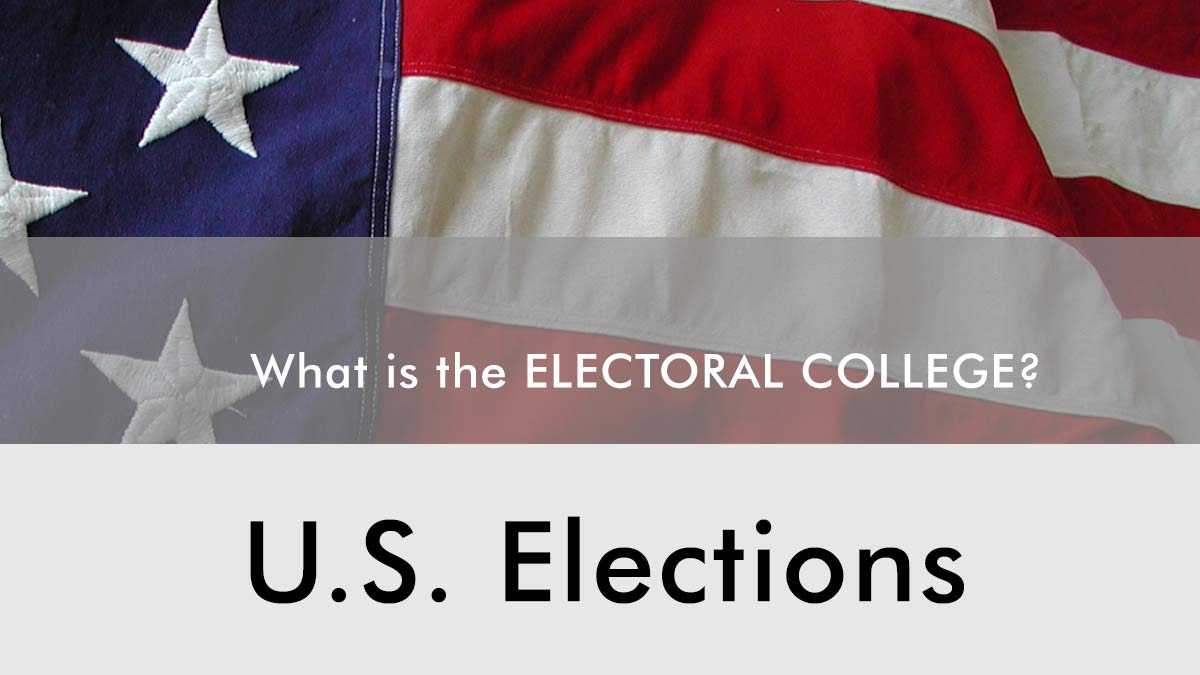
When American voters go to the polls to vote for president, many believe that they are participating in a direct election of the president. Technically, this is not the case, due to the existence of the Electoral College: The Electoral College was established by the founding fathers in the 18th century as a compromise between election of the president by Congress and election by popular vote.
The Electoral College is the name given to a group of “electors” who are nominated by political activists and party members within the states. On election day these electors, pledged to one or another candidate, are popularly elected.
The Electoral College consists of 538 electors (one for each of 435 members of the House of Representatives and 100 Senators; and 3 for the District of Columbia by virtue of the 23rd Amendment). Each State’s allotment of electors is equal to the number of House members to which it is entitled plus two Senators. The decennial census is used to reapportion the number of electors allocated among the States.
On the first Monday after the second Wednesday in December, following the presidential vote, the electors meet in their respective state capitals and cast ballots for president and vice president.
A majority of 270 electoral votes is required to elect the President and Vice President. No Constitutional provision or Federal law requires electors to vote in accordance with the popular vote in their State.
The electors prepare six original Certificates of Vote and annex a Certificate of Ascertainment to each one. Each Certificate of Vote lists all persons voted for as President and the number of electors voting for each person and separately lists all persons voted for as Vice President and the number of electors voting for each person.
In recent history, the electors have never cast their ballots against the winner of the popular vote. For all intents and purposes, the Electoral College vote, which for technical reasons is weighted in favor of whoever wins the popular election, increases the apparent majority of the winning candidate and lends legitimacy to the popular choice. It is still possible, however, that in a close race or a multiparty race the Electoral College might not cast 270 votes in favor of any candidate.
If no presidential candidate wins a majority of electoral votes, the 12th Amendment to the Constitution provides for the presidential election to be decided by the House of Representatives. The House would select the President by majority vote, choosing from the three candidates who received the greatest number of electoral votes. The vote would be taken by State, with each State delegation having one vote. If no Vice Presidential candidate wins a majority of electoral votes, the Senate would select the Vice President by majority vote, with each Senator choosing from the two candidates who received the greatest number of electoral votes.
The Electoral College system was established in Article 2, Section 1, of the U.S. Constitution. While it has been the subject of mild controversy in recent years, it is also seen as a stabilizing force in the electoral system.
How the Electoral College works
Registered voters in the 50 states and the District of Columbia cast ballots for president and vice president on the first Tuesday following the first Monday in November in a presidential election year. That is the Election Day.
The candidates who win the popular vote within the state usually receive all the state’s electoral votes. (Technically, all the electors pledged to those candidates are elected.)
A state’s number of electors equals the number of senators and representatives from that state. The District of Columbia, which has no voting representation in Congress, has three electoral votes.
The number of representatives depends on the population size which is determined by the US Census every 10 years, the last occurred in 2010. Next is 2020.
The electors meet and officially vote for president and vice president on the first Monday following the second Wednesday in December in a presidential election year. A majority of the vote is required for a candidate to be elected. Since there are 538 electors, a minimum of 270 is necessary to win the electoral college.
If no candidate for president receives a majority of the electoral votes, the House of Representatives must determine the winner from among the top three vote-getters in the Electoral College. In doing so, members of the House of Representatives vote by states, with each state delegation casting one vote.
If no candidate for vice president receives a majority of the electoral vote, the Senate must determine the winner from among the top two vote-getters in the Electoral College.
The president and vice president take their oath and assume office on the next January 20, following the election.

